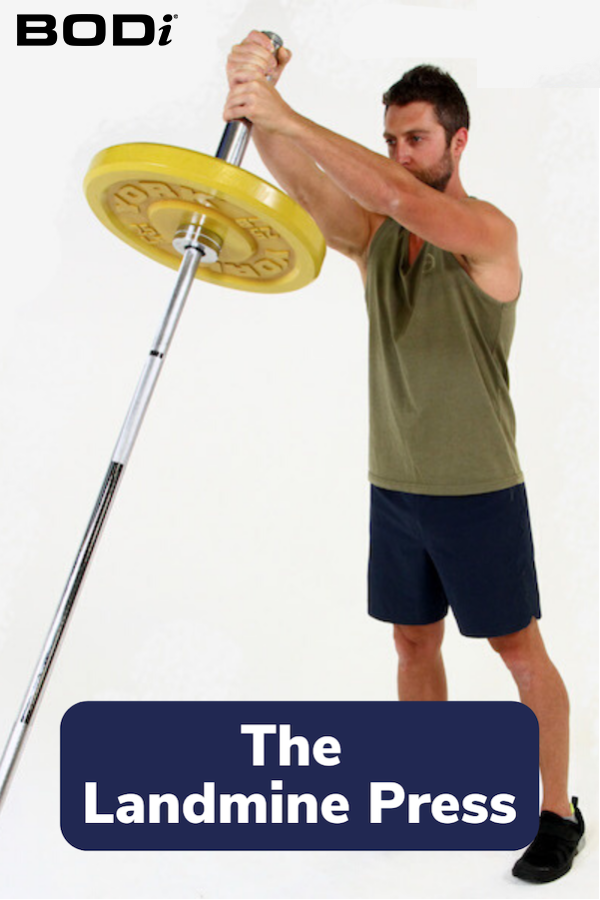Landmine Press: The Best Shoulder Press You Aren’t Doing
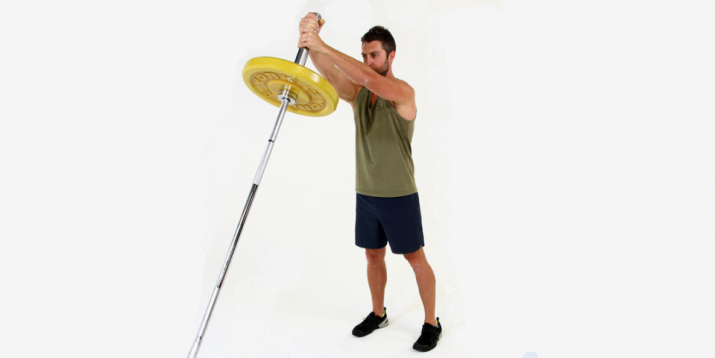
Vertical pressing exercises (meaning, you press weight overhead) can be power players in an upper-body workout. But the problem is that very few people actually have the mobility to properly perform them. That’s exactly what makes the landmine press so genius, says Baltimore-based strength coach Erica Suter, CSCS.
When you try to press a weight overhead without the proper shoulder mobility, you have to compensate by arching and throwing your weight into your back. Not only is that poor form, but it can also cause significant back pain, explains Suter.
Pressing straight overhead can also cause pain and clicking in cranky shoulder joints.
Rather than requiring a straight-overhead motion, the landmine shoulder press involves pressing one end of a barbell diagonally up and forward, away from your body.
The result: You get all of the benefits of overhead pressing without the risk to your shoulders or back.
Think you have good shoulder mobility? Try this test:
- Stand with your back against a wall.
- Keeping your upper back, glutes, and the back of your head against the wall, reach your arms fully overhead.
- Can you touch the wall with the backs of your hands? If not… skip overhead pressing and go with landmine pressing instead.
Landmine Press: Step-by-Step Instructions
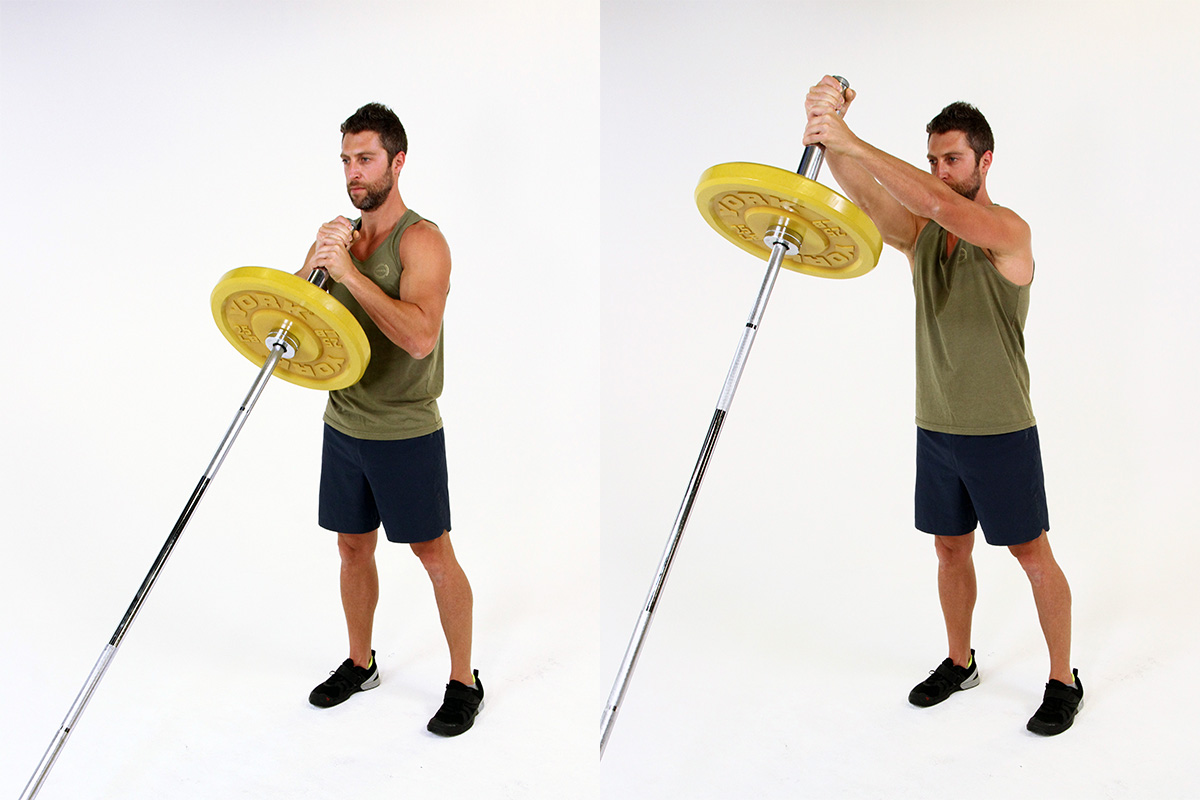
- Affix one end of a barbell to a landmine. If desired, add weight plates to the free end and secure with a safety clip.
- Stand facing down the shaft of the barbell with your feet shoulder-width apart. Hold the weighted end of the barbell with both hands in front of your chest, one hand on top of the other. Brace your core.
- Press the weight up until your arms are extended.
- Pause, then slowly lower the barbell back to your chest. Repeat for all reps.
What Can I Use Instead of a Landmine for the Landmine Press?
Some gyms don’t have a landmine for performing shoulder work. That’s OK!
You can easily perform a landmine press by placing one end of the barbell securely in a corner of your gym, a corner of a squat rack frame, or even in the nook created by two 45-pound bumper plates. As long as your barbell feels secure, anywhere is game.
Just remember to be considerate of your gym’s equipment — to prevent any scuffing, you can wrap the end of the barbell in a towel or place it in a sneaker that then goes in the corner.
Landmine Press Variations
Once you feel confident with the dual-arm landmine press, try out these back-friendly shoulder, chest, and triceps workout exercise variations. They’re listed below from most beginner-friendly to most advanced.
1. Landmine single-arm press
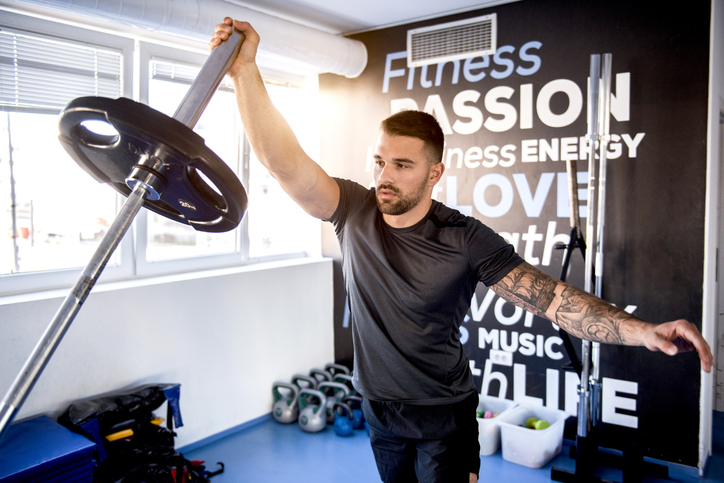
Take a staggered stance (you can step either leg forward) and press the bar up with one arm.
2. Landmine chest press
Lie flat on your back on the floor, parallel to the barbell with the top of your head pointed to the anchor point. Hold the end of barbell at your chest and press the bar with one or both arms.
3. Kneeling landmine press
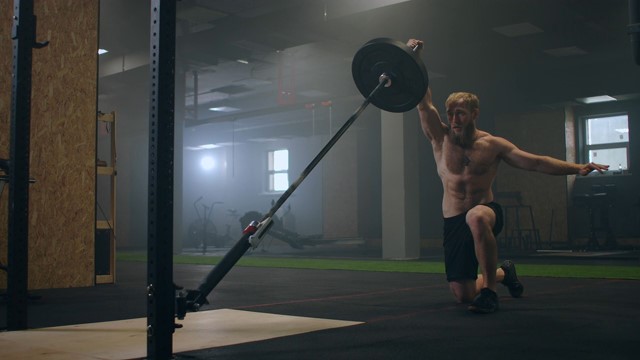
Set up by kneeling on one or both knees. Then, you can perform either two-arm or single-arm landmine press variations.
4. Landmine shoulder-to-shoulder press
Use both hands to press the bar up, lower to one shoulder. Press the bar back up, and then lower to the opposite shoulder. Continue alternating.
5. Landmine push-press
Add a small bend to your knees and use your legs to help drive up the bar. This can allow you to press more weight. You can try this using one or both arms.
6. Landmine squat to press
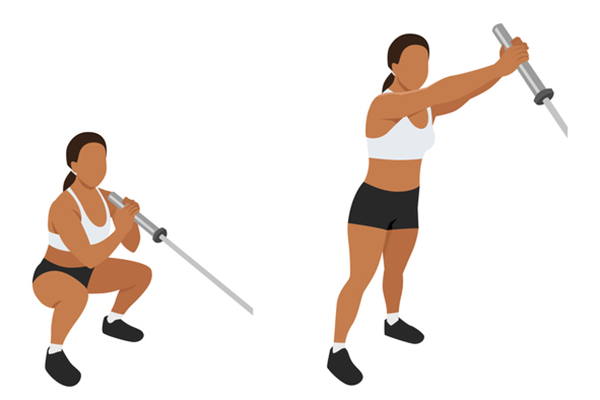
Lower into a full squat before driving the bar up. Lower into a full squat as you lower the bar to your chest. Then, come out of the squat to standing as you drive the bar up.
Landmine Press Muscles Worked
The landmine press exercise (and its variations) trains your pushing muscles, as well as your core.
Depending on the landmine press variation you use, you will place greater emphasis on certain muscles while deemphasizing others.
For example, by loading only one side of the body at a time, the single-arm landmine shoulder press introduces instability and forces the core to do overtime.
The dual-arm press as well as single-arm shoulder presses from a kneeling position will be more stable and involve less core engagement, but will allow you to move more weight.
And the landmine chest press is, like the name suggests, a major chest workout.
Here’s a more detailed look at the muscles worked by this exercise:
1. Shoulders
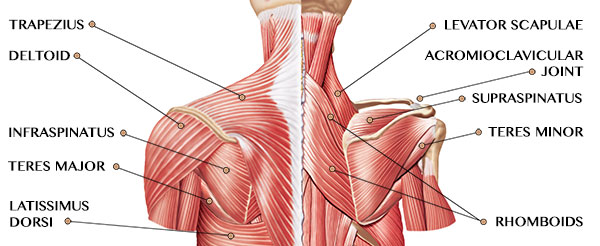
All presses train both the deltoids and rotator cuff muscles, which attach to the shoulder blades and stabilize your upper-arm bone (humerus) in your shoulder socket.
2. Chest
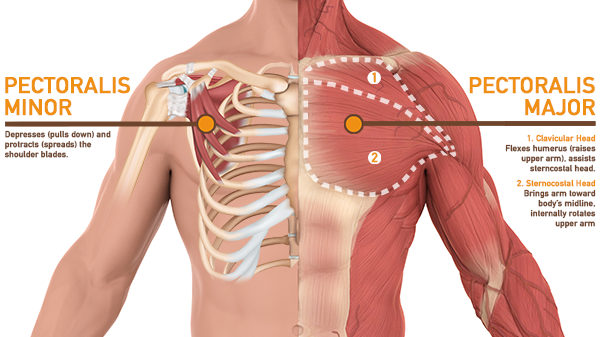
The pectoral muscles help the shoulder extend the weight overhead and are a primary driver when pressing the bar directly in front of your chest.
3. Triceps
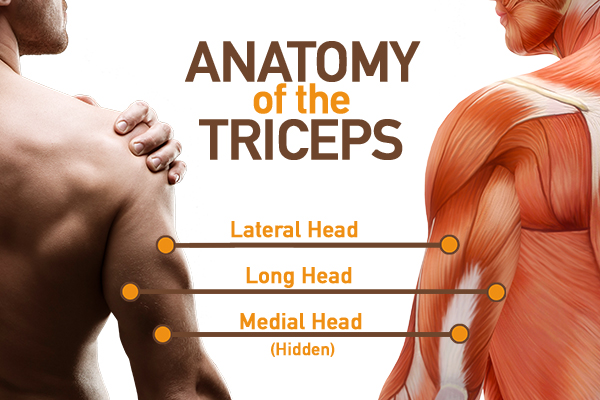
Any time your elbow straightens, your triceps (in the back of your upper arm) are at work.
4. Core
Your core — which includes muscles like your abdominals, obliques, and some back muscles — are responsible for securing a stable, safe spinal position throughout the exercise, and prevent you from tipping over during the single-arm work.
